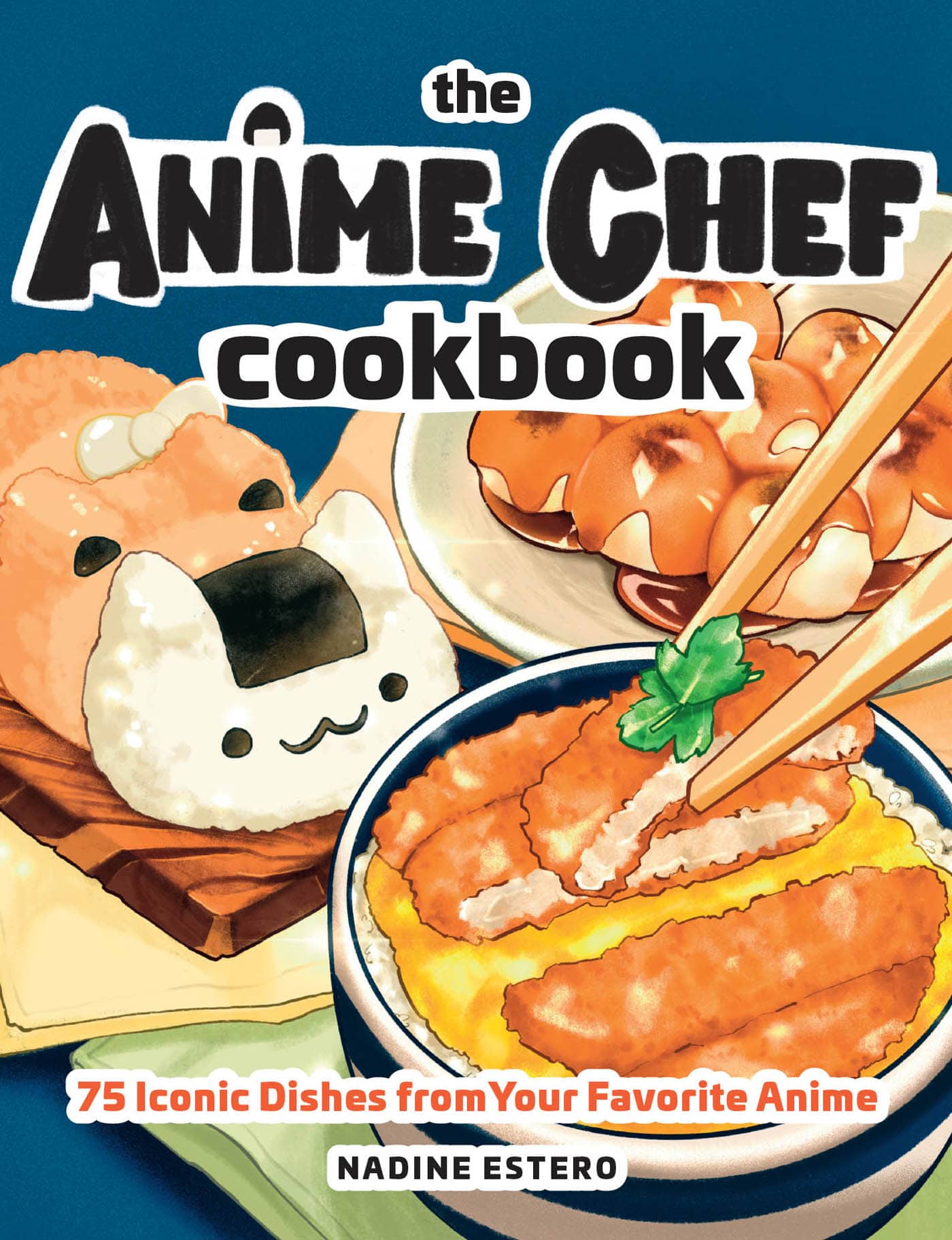Contents
Page List
Guide
Cover
CONTENTS
INTRODUCTION
WHO KNEW THAT WHEN YOU SETTLE IN TO WATCH AN ANIME THAT A SIDE EFFECT IS A CRAVING FOR DELICIOUS-LOOKING ANIMATED FOODS?
Just like in our own lives, food plays a huge role in anime, which is one of the many reasons we enjoy watching anime and find it so relatable no matter the subject matter. Food featured in anime can vary from just a flash on the screen to an entire episode devoted to a recipe, from traditional Japanese comfort foods to something completely invented. There are even entire series that are just about cooking and food.
My interest in cooking started while I was at university and would watch cooking videos by self-taught cooks. When I moved into a place of my own, I started cooking for myself, which made me immerse myself even more in the food world. Soon after, I became interested in re-creating foods in anime and video games. I loved the challenge of replicating food artistically, as well as making it appetizing, all while paying respect to the setting of each anime. Ive watched anime ever since I can remember, and my favorite series growing up were action anime, such as Dragon Ball Z and YuYu Hakusho. Now my favorites are in the slice-of-life genre, such as Laid-Back Camp and Fruits Basket. I started documenting my food re-creations on social media in late 2020, quickly acquiring over two hundred thousand followers. In this book, I wanted to represent a variety of anime (though there a couple of repeats) and dishes, so that there was a nice mix of savory and sweet. A lot of the recipes are common Japanese dishes, but I also created dishes based solely on how they looked or from any hints about flavors that I could glean from the dialogue.
My mission with The Anime Chef Cookbook is to share the joy that food, animation, and art bring me with you, and for you to use the recipes in this book to spend time with others creating and eating delicious food. Messages from people describing how I have given them inspiration and how experiences with my food brought their family together fill me with happiness. I also dont want you to feel the need to replicate my recipes exactly. Some of them, especially the desserts, have a lot of bells and whistles, as my goal is to re-create the dishes as they look in the anime, so feel free to do as little or as much as you like. Most importantly, have fun and satisfy that appetite!
THE ANIME KITCHEN
Beyond the basic tools you may already have stocked in your kitchen, these are recommendations for additional items you may want to have on hand that are useful for the recipes throughout the book. For recipes that require more specialized tools, they are listed as Special Tools for that recipe. Regarding the ingredients, use this list as a reference guide because a lot of items are Japanese, which you can find at Japanese and Asian markets or online.
TOOLS
CHOPSTICKS A simple pair of chopsticks comes in handy for stirring, holding, and decorating foods.
COOKING RACK Also called cooling racks, these metal racks have short legs that raise them off a surface. Look for racks that can be used in the oven and for setting items on to cool.
ELECTRIC MIXER A lot of the dessert recipes involve whipping eggs or heavy cream, so a hand mixer with a whisk attachment will make your life easier. For some dough recipes, a stand mixer is recommended, but these are an investment, and you can always knead that dough with your hands and build some muscles.
FINE-MESH STRAINER This strainer with tiny holes is great for rinsing rice and refining pures, jams, and pastes. You can also use cheesecloth.
OFFSET SPATULA This is a thin, metal spatula that works well for frosting cakes and giving them a polished look.
PIPING BAGS AND TIPS To give your desserts that over-the-top anime decoration, piping bags and tips will help. There are disposable and reusable piping bags, and piping tips come in lots of sizes. You can purchase a basic piping bag and tip set online. If you dont have a piping tip, you can also cut a hole at the tip of a piping bag, or even use a resealable plastic bag with a corner cut off if you dont have either.
PASTRY BRUSH This brush is great for brushing egg wash, oil, sauces, and more onto foods.
THERMOMETER I recommend two types of thermometers: an instant-read thermometer for measuring the internal temperature of meat and a candy thermometer for not only candy making but also for measuring oil when deep-frying.
INGREDIENTS
BONITO FLAKES (KATSUOBUSHI) Very thinly shaved pieces of fish that have been dried, smoked, and fermented and used to flavor stocks and top dishes.
BONITO POWDER A finely ground version of bonito flakes.
CHILI OIL A Chinese condiment made with oil infused with chili pepper that adds a little spiciness to a dish.
CHINESE FERMENTED SOYBEANS (DOUBANJIANG) A condiment with a paste-like texture made with fermented soybeans and chili pepper that adds umami and spiciness to a dish.
CHINESE FERMENTED BLACK BEANS (DOUCHI) Whole black beans fermented in salt that add umami to a dish.
CROWN DAISIES Also called chrysanthemum leaves, these greens are eaten both raw and cooked in Asian dishes.
DARK SOY SAUCE Fermented for a longer period of time than regular soy sauce, it results in a product that is thicker and sweeter.
DASHI POWDER An instant soup stock with flavors of bonito flakes (katsuobushi) and dried kelp (kombu) for making dashi, the base for many Japanese soups. Also used to flavor other dishes.
DEEP-FRIED TOFU POCKETS (ABURA-AGE) Golden-brown tofu that has been deep-fried twice. The deep-frying creates a pocket, or pouch.
DRIED KELP (KOMBU) Dried brown kelp that comes in sheets or strips and is used to flavor dashi stock.
DRIED SEAWEED (NORI) A dried seaweed of red algae that comes in sheets and is often used to make sushi rolls and onigiri.
DRIED SEAWEED FLAKES (AONORI) Dried green seaweed that is finely chopped and used to sprinkle on dishes.
DRIED RED BEANS (ADZUKI BEANS) Often cooked and sweetened to make the red bean paste found in many Asian sweets.
FISH CAKE (NARUTOMAKI) Recognizable by its pink swirl when sliced, this cured minced fish paste comes in the shape of a tube with ridges.
JAPANESE MOUNTAIN YAM (NAGAIMO OR YAMAIMO) When grated, this hairy root vegetable is the secret ingredient for fluffy okonomiyaki (savory pancake).
JAPANESE PARSLEY (MITSUBA) This herb used to garnish dishes tastes less like the parsley we know and more like celery.
JAPANESE RADISH (DAIKON) A long, white root vegetable with a slightly bitter taste that can be eaten raw or cooked and is often enjoyed pickled.
KEWPIE MAYO A beloved Japanese mayonnaise that is made with egg yolks instead of whole eggs like other mayonnaise.











